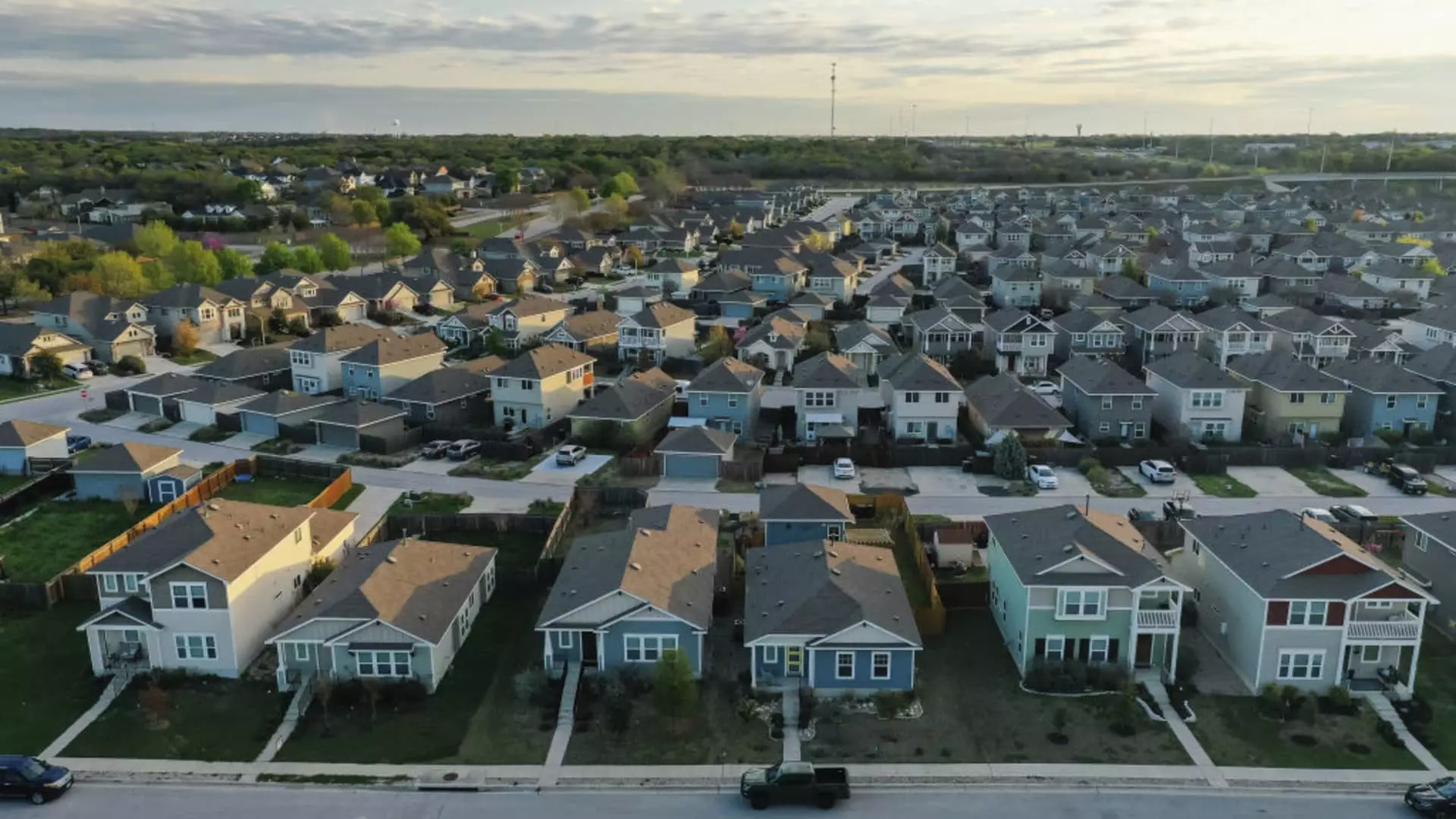As the spring housing market approaches, homebuyers appear to be adopting a wait-and-see approach, even with a notable increase in property listings. Many potential buyers are grappling with stagnant mortgage rates and soaring home prices, which dampens their enthusiasm. A recent report from the Mortgage Bankers Association reveals a concerning 4% dip in mortgage applications last week compared to the previous week, reflecting a persistent stagnation in market demand. Despite a relatively unchanged landscape from last year, buyers are hesitant to make significant commitments.
The average size of purchase loans has shown an upward trend since the beginning of the year, reaching $447,300—a record high for this market segment. This increase is indicative of buyers’ struggles to find affordable homes; many are compelled to take on larger loans just to secure a property. Additionally, the average interest rate for 30-year fixed mortgages has slightly decreased to 6.97%, down from 7.02%. While this might suggest positive momentum, the marginal reduction is hardly enough to stimulate surging demand, especially when considering that prospective buyers are faced with increasing points on loans, nudging costs higher.
Interestingly, amidst a backdrop of flat purchasing activity, refinancing applications have seen a 12% increase from last week and a 17% rise compared to the same week in the prior year. Yet, interpreting these figures requires caution, as the rise is primarily due to previously low volumes in refinancing applications. With many existing borrowers locked into lower rates from previous years, today’s mortgage offerings are often unattractive. As a result, refinancing, while experiencing a surge, does not signify a robust market for new home sales.
The current climate for home sales reveals a startling statistic: transactions are operating at levels reminiscent of a three-decade low. The ongoing climb in home prices exacerbates this issue, driving buyers away. In a bid to stimulate interest, an increasing number of sellers are implementing price cuts. In January alone, 15.6% of listings saw price reductions—an uptick from 14.7% recorded this time last year. Despite these adjustments, many sellers are still managing to maintain their list prices, thanks to the competition that lingers in the market.
Even though the supply of homes for sale has risen by 25% compared to the previous year, the market remains constrained—25% lower than in January 2019. Homes are lingering on the market longer, as evidenced by an average selling time of 54 days in January, marking the longest span since early 2020. This phenomenon indicates that while more homes are available, buyers are not motivated enough to make swift purchasing decisions. The extended time frames suggest caution among homebuyers, further complicating an already sluggish market.
While more listings and marginally decreased mortgage rates hint at vibrancy, the steadfast rise in home prices, low sales volume, and buyer hesitation create a complex landscape. Homebuyers are left contemplating their next steps as they navigate the challenging terrain of the spring housing market.

